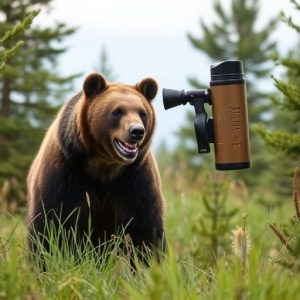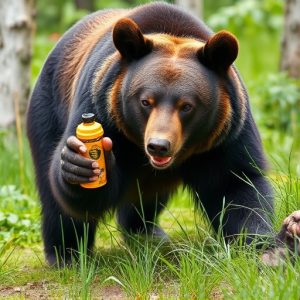Bear Spray Range: Mastering Safety with Wind Direction Considerations
Understanding wind direction is key for bear spray safety. Tailwinds reduce bear spray range, while…….
Understanding wind direction is key for bear spray safety. Tailwinds reduce bear spray range, while headwinds improve control. Position yourself upwind from bears to maximize protection, and be cautious of backdrafts. Respect wind direction, anticipate weather, and stick to marked trails for effective bear spray safety.
“Unraveling the effective range of bear spray is crucial for ensuring safety in wild encounters. This article explores the key factors that determine how far bear spray can deter these powerful animals, with a special focus on wind direction and its subtle yet significant impact.
We’ll navigate through best practices for usage and offer essential tips for navigating the wilderness, empowering you to make informed decisions when facing potential bear encounters, ensuring optimal Bear Spray Safety.”
- Understanding Bear Spray Range: Factors Influencing Effectiveness
- Wind Direction and Its Impact: Maximizing Bear Spray Safety
- Best Practices for Bear Spray Use and Navigation in the Wild
Understanding Bear Spray Range: Factors Influencing Effectiveness
Understanding Bear Spray Range: Factors Influencing Effectiveness
Bear spray, a popular deterrent for encounters with aggressive bears, is designed to create a safety barrier when used correctly. However, its effectiveness is influenced by various factors, one of the most crucial being the wind direction. When considering bear spray safety, it’s essential to understand that a tailwind can significantly reduce the range and impact of the spray, as it blows the irritants back towards the user. Conversely, a headwind allows for greater distance and better control over the spray’s direction.
Other elements, like temperature, humidity, and terrain, also play a role in bear spray performance. Warm weather can cause the spray to dissipate faster, while cold conditions may solidify it slightly, affecting its dispersion. Humidity levels impact the spray’s range as well; higher humidity can make the spray stickier and less likely to travel far. Terrain features like rocks, trees, or steep slopes can also obstruct or deflect the spray, reducing its effective range.
Wind Direction and Its Impact: Maximizing Bear Spray Safety
Understanding wind direction is crucial for maximizing bear spray safety during outdoor activities in bear country. When using bear spray, it’s essential to account for airflow as it can significantly impact the effectiveness of the deterrent. Bear spray works by creating a barrier of capsaicin-based agents that irritates a bear’s eyes, nose, and respiratory system, causing it to retreat. However, if the wind is blowing in your face or towards you, the spray may not reach the bear effectively.
Therefore, when deploying bear spray, position yourself upwind from the bear. This ensures that the spray forms a protective barrier between you and the bear, maximizing its deterrent effect. Conversely, if the wind is at your back, be extra cautious as the spray could blow back towards you or not reach the bear adequately. Knowing and respecting wind direction is a key strategy for staying safe in bear country.
Best Practices for Bear Spray Use and Navigation in the Wild
When using bear spray, understanding wind direction is crucial for maximum effectiveness and safety. Always keep the wind at your back; spraying into the face of a prevailing breeze can result in off-target application, potentially endangering yourself or others nearby. Check local weather forecasts to anticipate wind patterns and adjust your route accordingly.
Proper navigation in bear country requires constant awareness and adherence to best practices. Stay on marked trails whenever possible, as they are usually designed with safety in mind. Keep a safe distance from known bear habitats and avoid leaving food or garbage that might attract bears. Make noise to signal your presence, especially when traversing dense vegetation where bears may be hidden. By following these guidelines, you enhance the likelihood of successful deterrence should a bear encounter occur.
Bear spray is an essential tool for safety in wild environments, but its effectiveness depends on understanding key factors like wind direction. By maximizing bear spray safety through strategic deployment and awareness of wind patterns, adventurers can significantly enhance their protection in potential encounters. Adhering to best practices ensures not only the spray’s reach but also responsible navigation in bear country, ultimately fostering a safer outdoor experience.


